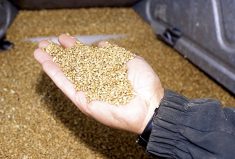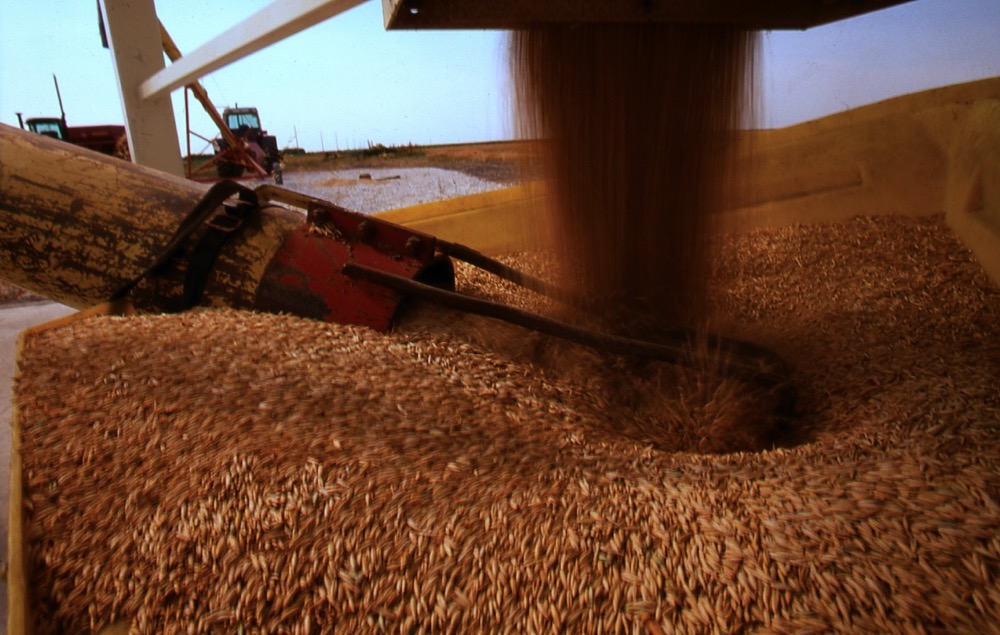Pay close attention to two critical numbers when storing grain, says Alberta Agriculture and Rural Development crops specialist Mark Cutts.
“Temperature and moisture content of the grain are two important factors that influence the length of time grain can be stored without a change in quality,” says Cutts. “In general, as grain temperature and moisture content increase, the allowable storage time decreases.”
For example, grain stored at 18 per cent moisture and 18 C can be stored for 20 to 30 days while grain stored at 15 per cent moisture and 15 C can be stored 160 to 240 days before spoilage becomes a concern.
Read Also

Hail research hopes to benefit potato growers
Alberta research scientist measures hail storm and heat dome affects on potato crops
For long-term safe storage (more than 240 days), grain entering the bin at 14 per cent moisture needs to be cooler than 13 C.
“There may be pockets of higher-moisture grain present within a bin that is testing an average of 13 per cent,” says Cutts. “These pockets of higher moisture can be a source of spoilage at isolated areas within a bin.
“Grain intended for long-term storage with a higher-than-desired moisture content should be put through a grain dryer. Aeration can then be used to keep the dry grain cool and to ensure a uniform grain temperature throughout the bin.”
If drying or aeration are not options, the grain should be monitored for heating. Permanent temperature sensing cables can be installed and used to evaluate temperatures throughout the bin. Another option is inserting a metal rod into the bin, leaving it for about 30 minutes, then removing and checking it for warmth.
Insects are another key concern.
“Under the Canada Grains Act, there is zero tolerance for the presence of live insects that feed on grain,” notes Cutts. “As such, checking for the presence of insects is critical to maintaining crop quality. Warm, moist and weedy crops are particularly susceptible and should be closely monitored.”
Insect monitoring requires weekly bin checks during the early stages of storage, and visual observations aren’t a guarantee there’s no infestation. Probe traps, which capture insects as they move through grain, have proven to be an effective detection tool.















